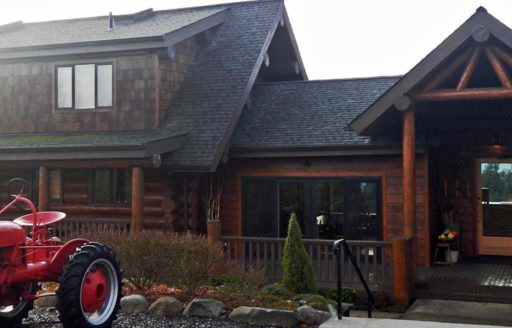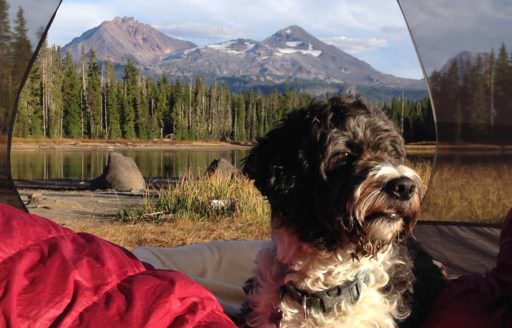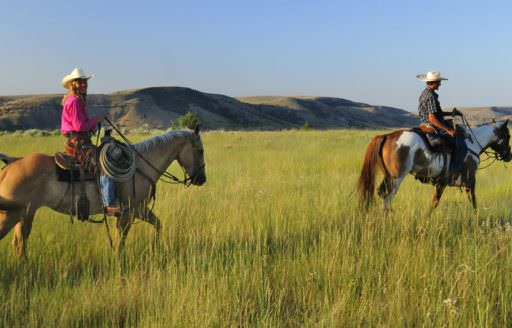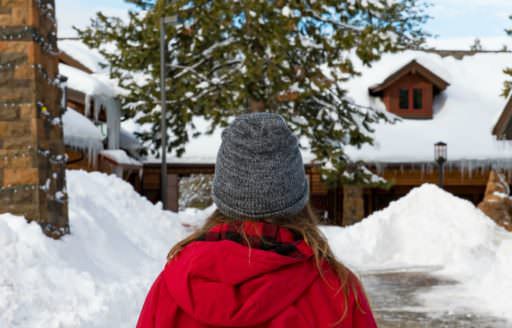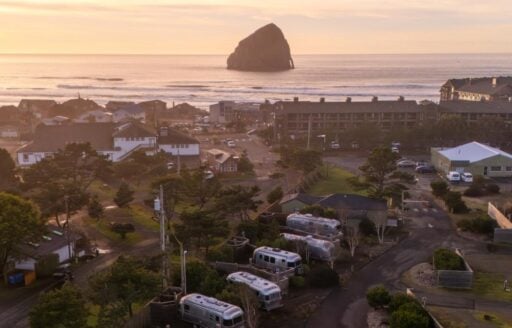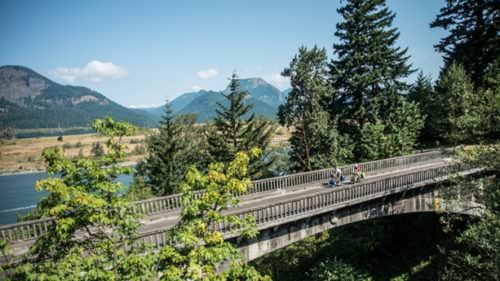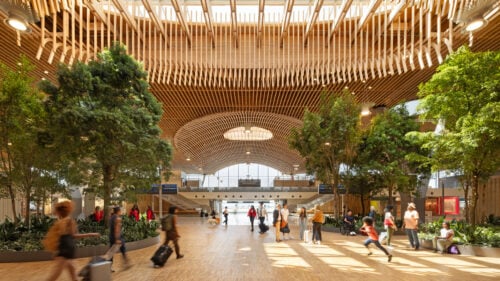Editor’s note: Never before have we so deeply experienced the effects of a changing planet. This four-part series dives into the effects of climate change on some of Oregon’s destinations, attractions and industries. We also explore the resilience of local communities and the innovations of local leaders determined to keep Oregon one of the greenest places in the world to visit and live.
Part 1: Land | Part 2: Wildfire | Part 3: Water | Part 4: Air
From the earthy aromas of pine forests to famously clear and dark night skies, Oregon’s air offers up a treat for the senses. But this critical resource — we breathe it in, after all — is at risk. Climate change has contributed to the frequency and intensity of wildfires, and population growth is causing upticks in pollution across the globe. Fortunately, communities and organizations across the state are joining together to celebrate and safeguard Oregon’s air, and there are lots of ways for residents and visitors to make a positive difference.
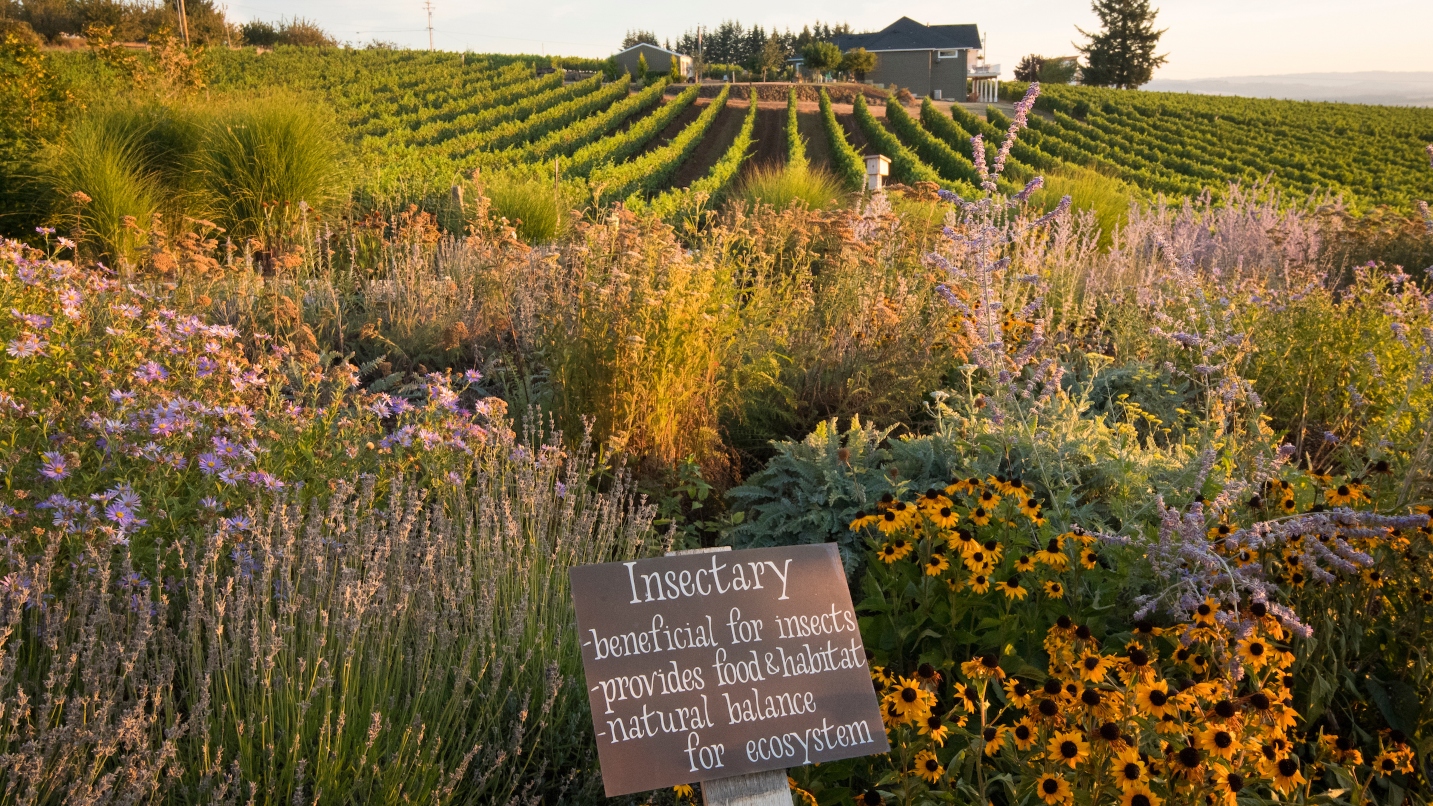
Sip Towards Climate-Friendly Wine Solutions
Many wineries in Oregon are working to address long-term solutions to climate change and drought, including different ways of farming. One industry leader not just in Oregon but in the U.S. is Troon Vineyard & Farm, based in Southern Oregon’s Applegate Valley. Since Dick Troon’s first grape planting on this former cattle ranch in 1972, the property, at the base of the Siskiyou Mountains, has become a space for intense study and innovation in the dynamic relationships between soil health, land stewardship, climate change and ecological resilience.
Troon is one of just two wineries in the U.S. to both Regenerative Organic Certified as well as certified as Demeter Biodynamic. These come from their commitment to practices including no-till agriculture, carbon sequestration and permaculture, among many more initiatives. You can experience Troon’s wines at their Grants Pass tasting room, which includes a vacation rental property on the vineyard, or at the biodynamic wine bar in downtown McMinnville.
Other wineries in Oregon are celebrating and showcasing their commitment to sustainability through various events, to match their ethos. For instance Brooks Winery in Amity in 2025 is hosting a rotating lineup of 12 purpose-driven, local artisans to their tasting room in a new Artisans in Residency series. Each artisan — either B-Corp certified, members of 1% for the Planet, or diversity-founded or -led — will offer tastings, classes, food pairings and education for tasting room guests. There will also be artisans’ products for sale, creative menu offerings and a community marketplace in November for the holidays. Each maker “brings a beautiful expression of craft to the table, and we’re thrilled to share their stories, products, and vision with our guests,” says Jennifer Cossey, Brooks general manager. The artisans include Salem-based Prismatic Coffee Roasters, Portland-based Brew Dr. Kombucha, Salem-based La Familia Cider, Central Point-based Rogue Creamery and more.

Fly Greener Into PDX
Getting around takes energy, and air travel is no exception. The Port of Portland has spent the past several years transforming Portland International Airport into a model of sustainability. Visitors can now experience a main terminal completely redesigned into bright, open space sheltered by a curving latticework of wood. Extensive daylighting and a new ground-source heat-pump system conserve energy. “The goal is to use 50% less energy, even as we increase in size,” says Katie Meeker, communications consultant for the Port of Portland. The new LEED-certified rental-car center relies on solar power and efficient design to reduce energy use. It was built with an emerging technology called CarbonCure concrete, which permanently traps carbon dioxide.
Once you touch down, there are plenty of ways to reduce your own carbon footprint. You can purchase carbon offsets or direct-capture packages through your airline or a third-party service. Those with electric vehicles can take advantage of the expanded number of charging stations at Portland International Airport. If you don’t need to rent a car, the airport now has safer and more appealing routes for pedestrians and bikes.
Pro tip: Stop by the PDX Welcome Center on the arrivals level near the baggage claim to find out more about ground-transportation options and free trip-planning resources. Don’t forget to pick up your free copy of the Travel Oregon Visitor Guide, Scenic Byways Driving Guide and more, or view them online.
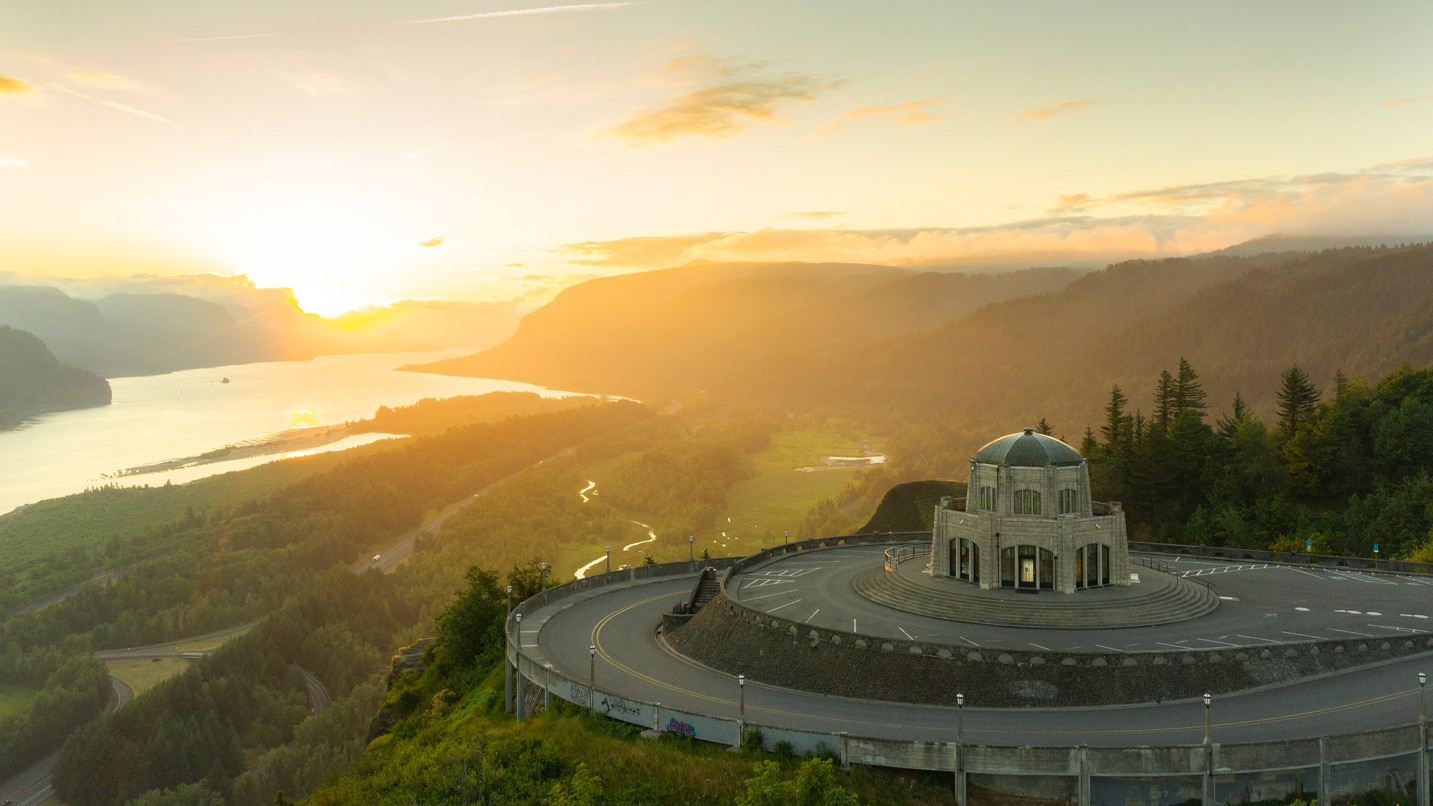
Ditch the Car for Better Air Quality
Pollution-busting car-free itineraries abound throughout the state. For instance, the Columbia River Gorge can be easily explored via numerous shuttles with pickup spots in Portland, Hood River, The Dalles, Parkdale and beyond. Going car-free saves the hassle of navigating traffic and parking. Drivers should be aware that personal vehicles need a timed-use ticket to access Multnomah Falls from I-84 Exit 31 between late May and early September — purchase it online.
Adventuring in an electric vehicle is also a great option — more than 65% of Oregon’s electricity comes from renewable resources like hydropower and wind power. Follow one of the many Electric Byways throughout the state, with their many charging stations, to explore while also preserving Oregon’s air.
If numbers float your boat, it’s easy to monitor air quality as you travel: Measurements from Oregon’s many air-quality sensors can be accessed online. You’ll most often see numbers referring to the Air Quality Index, a 0-to-500 scale where larger numbers correspond to a higher level of air pollution. Numbers below 50 indicate good air quality. This can be used as a good tool for visitors to choose their outdoor recreation spots — just as it is for Oregon’s frontline workers for their outdoor work.
Parks and other green spaces in urban areas often have cleaner air than their surroundings, and you can help preserve these healthy oases. SOLVE, a Portland-based nonprofit, organizes cleanup events and trail-maintenance days at parks across the state.
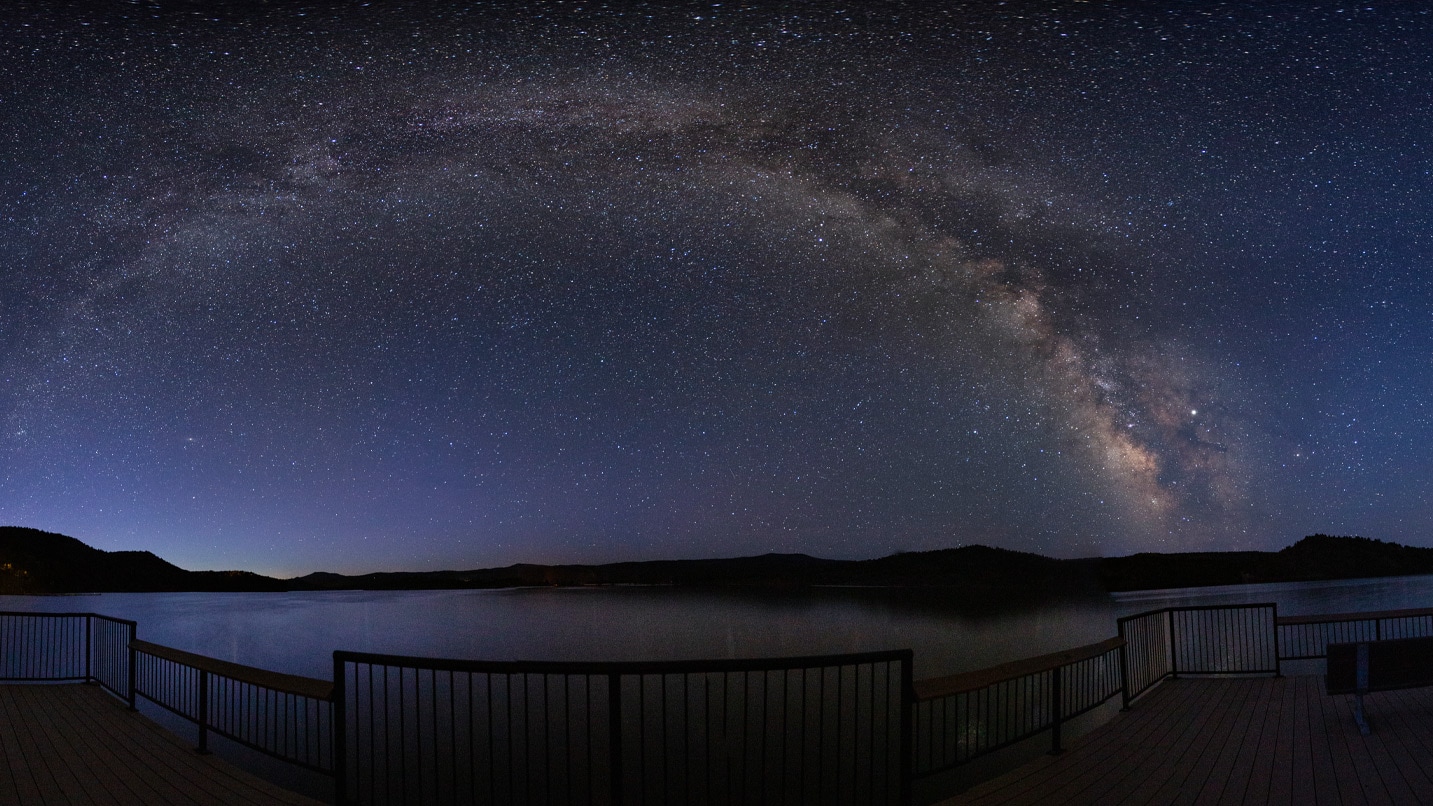
Celebrate Oregon’s Pristine Starry Skies
For those night owls out there, Oregon’s air can also be appreciated — and safeguarded — after the sun goes down. Visitors to Southern Oregon can enjoy stargazing at some of the darkest skies in the United States thanks to concerted efforts to reduce nighttime artificial lighting. Under dark skies, the views of the cosmos are simply jaw-dropping, says Dawn Davis, a photographer who captures panoramas of the night sky. “It’s just mind-blowingly spectacular how many stars there are.”
Oregon is now home to half a dozen official dark-sky areas designated by DarkSky International, noted for their communities’ commitment to reducing light pollution. They include the Oregon Outback International Dark Sky Sanctuary and Oregon Caves National Monument in Southern Oregon; the cities of Antelope and Sisters and Prineville Reservoir State Park in Central Oregon; and Eastern Oregon’s Cottonwood Canyon State Park.
Visitors can help preserve dark skies by following simple steps. If you’re walking around after sundown, consider using a flashlight that emits low-energy red light rather than white light. (Some smartphones can be put into red-light mode by changing a few settings.) And minimize sources of light whenever possible. If you’re camping, you’ll want to enjoy the night sky rather than artificial light anyway, says Davis. “Does your vehicle need to have a lot of external lights on it? Do you need to have a roaring campfire, or can you have a mellow campfire?”
Your actions will help preserve the splendor of the night sky, and they’ll also help animals, too — some birds migrate at night, guided by the stars and moon, and bright lights can confuse them. The Audubon Society of Portland hosts a yearly Lights Out event that encourages building owners and residents to turn off unnecessary outdoor lighting at night when birds are migrating. Check out the events happening under Oregon’s pristine starry skies during and after International Dark Sky Week in April.
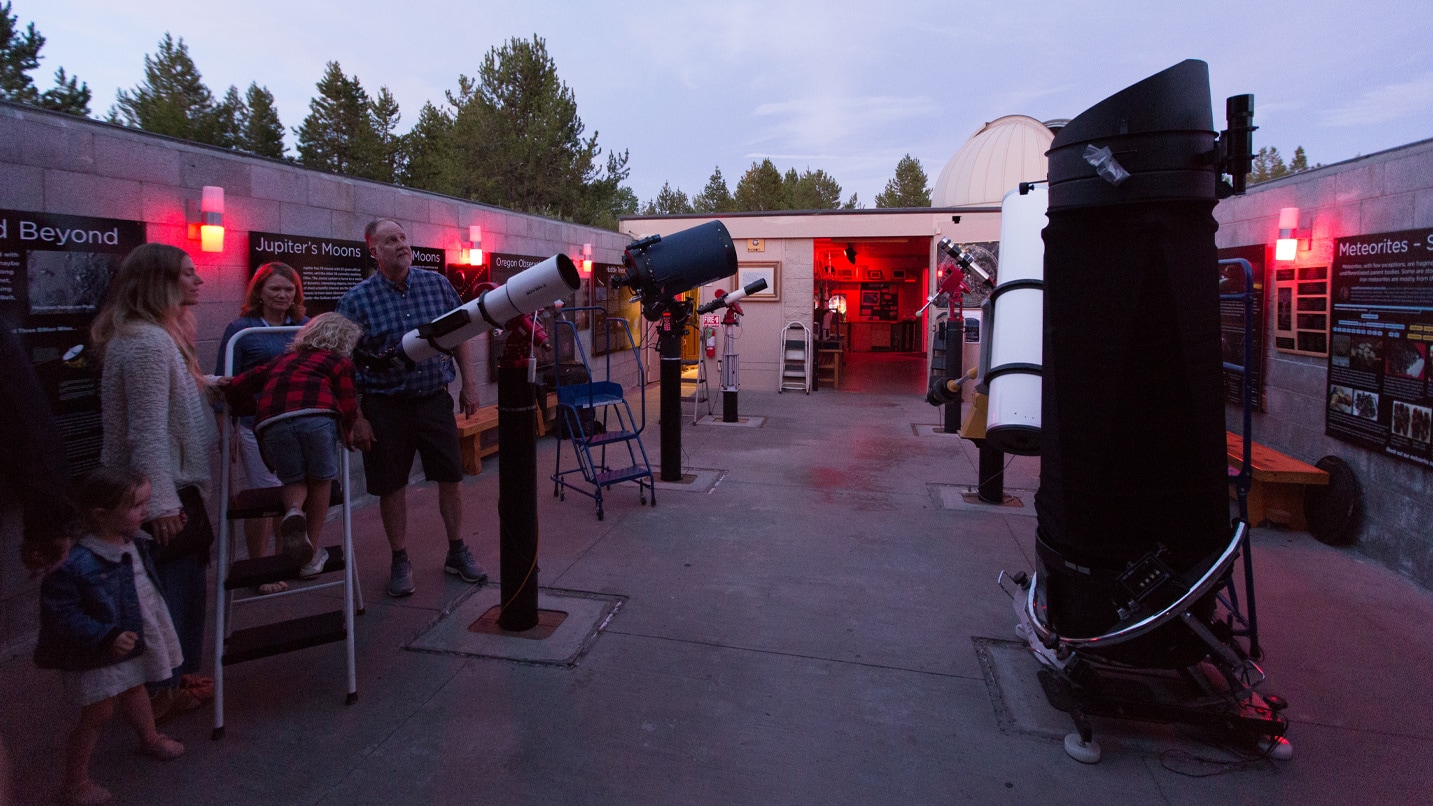
Stargaze With a Naturalist Guide
Visitors seeking a guided tour of Oregon’s dark skies can take part in an excursion that includes stargazing. A variety of adventures like snowshoeing and canoeing are available across the state: Wanderlust Tours, based in Bend, and Go Wild American Adventures, based in Baker City, both take guests to wilderness areas at night. Expeditions that include time to take in the night sky are a special experience, says Courtney Braun, a co-owner and naturalist guide at Wanderlust Tours. Guests are often astonished at the sheer number of stars visible from the dark skies of the Cascade Mountains, she says. “It can really be quite impressive once you get away from the lights of town.”
If you’re keen to get a closer look at cosmic sights, there are also opportunities to look through a telescope at one of Oregon’s observatories. Both Sunriver Nature Center & Observatory and Pine Mountain Observatory, located near Bend, welcome visitors. (Tip: If you can’t visit in the evening, try for midday — you’ll get to see the magnificent solar flares of the sun by telescope.) Regularly scheduled star parties at Sunriver Nature Center & Observatory allow visitors to get up close and personal with the night sky and learn from knowledgeable staff astronomers.
There are many ways to enjoy — and protect — Oregon’s air. Help out in a way that works for you, and don’t forget to take a deep breath!
Part 1: Land | Part 2: Wildfire | Part 3: Water | Part 4: Air



